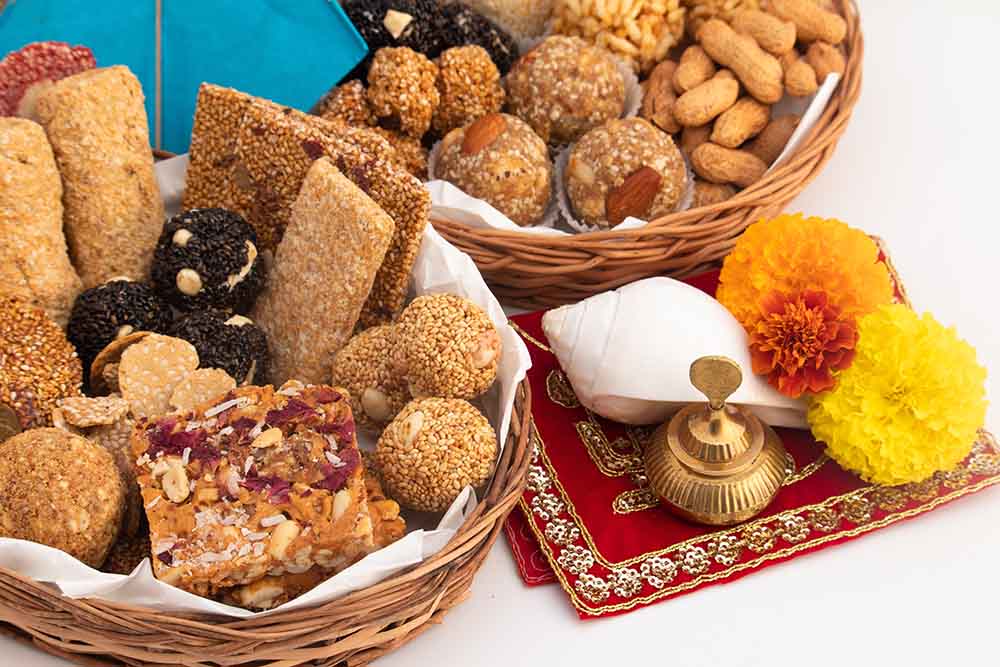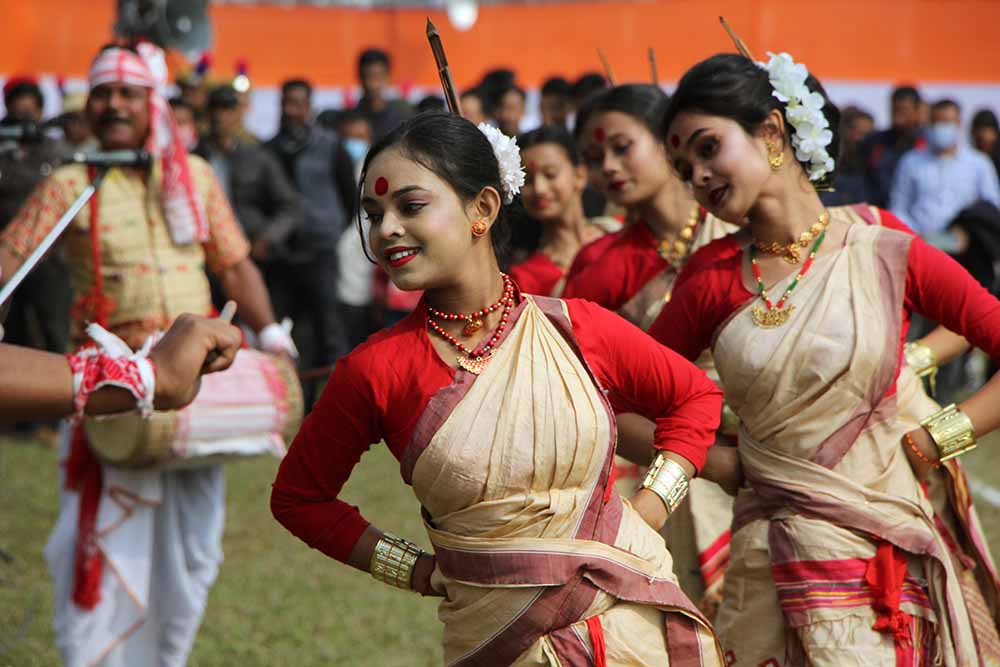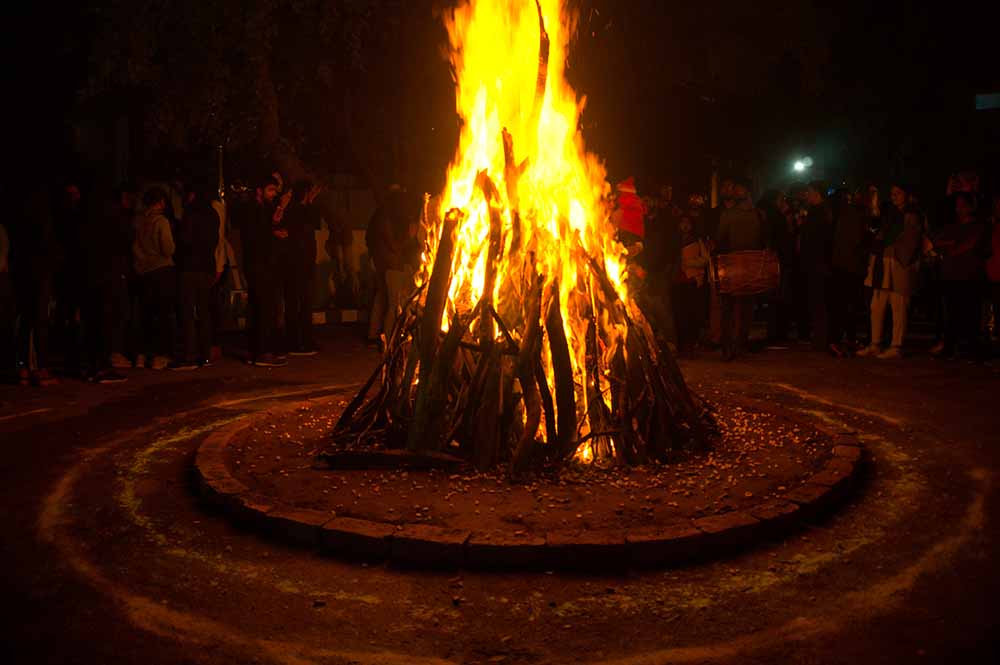India celebrates a series of harvest festivals in each state at various times of the year. Each festival may have a different moniker, but they are all symbolic of the same thing – expressing gratitude for an abundant harvest. The harvest of new crops is celebrated by people in Gujarat, Kerala, Tamil Nadu, Haryana, Himachal Pradesh, West Bengal, and Punjab with bonfires, carnivals, music, dance, kite flying, rallies, and of course plenty of food! As mid-January dawns, the first set of harvest festivals kick off with revelry and fervour. Let’s take a look at some of them, what they’re called, and more importantly how to greet one another keeping language and the spirit of tradition alive!

‘Til gul ghya goad goad bola!’
In Maharashtra, people wish each other poetically- ‘Til gul ghya goad goad bola’, which roughly translates as ‘take the sweets and speak sweet words’.
Every year on January 14th, India welcomes a nationwide surge of joy and celebration. Makar Sankranti marks the start of harvest season, when fresh crops are worshipped and shared. In addition, people make special meals with fresh rice, coconuts, and jaggery, exchange haldi-kumkum (turmeric and vermillion) greetings, fly kites, and spend quality time with each other.
Makar Sankranti signifies the sun’s entry into the sign of Makara, or Capricorn, as it proceeds through space. According to Hindu mythology, this event marks the beginning of a good phase and the conclusion of a bad one.

‘Pongal Nalvazhthukkal!’
Coinciding with Makar Sankranti, Pongal is simultaneously celebrated as a harvest festival in Tamil Nadu. The entire state chants ‘Pongal O’ Pongal’ in chorus as a pot of cooked rice and milk boils over. If you want to wish a fellow Tamilian in Tamil say, ‘Pongal Nalvazthukkal or 'Iniya Pongal Nalvazthukkal’ (Iniya means sweet).
Pongal literally translates to ‘boil over’ or ‘overflow’. It is a four-day celebration in the state, bustling with various activities. Freshly harvested milk and rice are cooked outdoors and offered to the Sun God. Tamilians use rice powder to create customary designs outside their homes known as kolams, to commemorate the occasion.
Mattu Pongal pays tribute to all the animals who have historically been vital to agriculture. As a token of appreciation, the bulls and cows that stand at the heart of pastoral communities are decked up, showered, and worshipped on this day. The following day is Kaanum Pongal, a community event that involves going out and meeting family and friends.

‘Shaklolohi bahag bihu tatha rangali bihu antabik shubechha!’
Bihu or Rongali Bihu is the harvest festival of northeast India. In Assam, this is how one wishes another during Bihu - ‘Shaklolohi bahag bihu tatha rangali bihu antabik shubechha!’
The celebrations and ceremonies take place over a few days. In Assam, cows are revered, and the first day of the celebration, called Goru Bihu, is devoted to their adoration. Manuh Bihu, is the second day which involves a lot of feasting and merrymaking. Gosai Bihu, the third day, is devoted to seeking blessings from the gods and goddesses. Senehi Bihu, the fourth day, is when people visit and exchange presents with friends and family.

‘Lohri di lakh lakh vadhaiya!’
Lohri is the harvest festival of Punjab, where people gather at a common place to exchange mithai/sweets, as opposed to going to one other’s houses. The community gathers and exchanges greetings, ‘Lohri di lakh lakh vadhaiya!’
Tthe origin of the word Lohri is from the terms til (sesame) and rorhi (jaggery), which are customarily consumed during the celebration. . After the fire goes out, popular dishes like makki di roti te sarson da saag (cornflour pancakes and mustard spinach) and lassi (buttermilk) are served for dinner. Traditionally, Lohri night falls on the winter solstice, which is the longest night of the year. It also indicates that the biting cold winter is coming to an end and brighter, sunnier days are on the horizon.